Born in Dar es Salaam, Tanzania, and now based in the city of Arusha, she has long explored the contours of artistic expression, navigating both personal and collective storytelling. Her work is an arresting interplay of dark, bold female figures set against vast, unpainted spaces – an artistic choice that speaks volumes about presence, absence and infinite possibility.
Rooted in a deep sense of identity and a quiet defiance against mainstream expectations, Sungi’s paintings serve as personal expressions and broader cultural narratives.
“I refer to myself as a creator,” Sungi says. “I love making things, the transformation of creating something from nothing. It’s a fulfilling journey, one of boldness and surprise.”
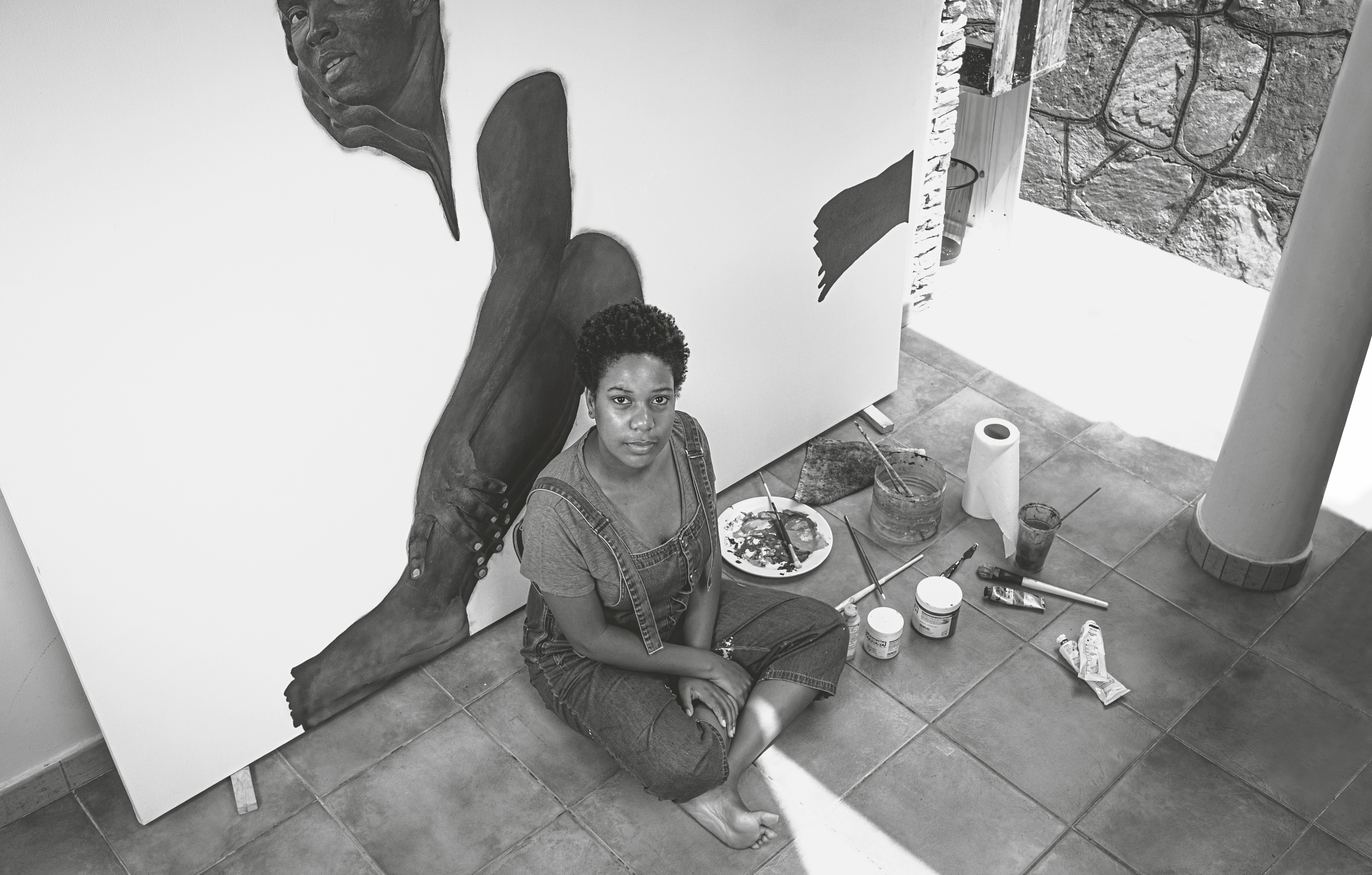
Sungi Mlengeya
Sungi’s signature use of negative space came about by chance. In her early works, she searched for the perfect background – something that would make her figures stand out with striking clarity.
“I worked on the face first, and when I was done, I fell in love with the contrast of the dark tones against the white background. That absence became meaningful,” she explains.
Sungi’s empty backgrounds represent limitless potential, the moment before making a commitment, where anything is possible” she says. It invites the viewer to step in, to imagine and construct their own narratives beyond what is immediately visible. The absence of environmental cues or clothing frees the subjects from temporal or geographical constraints, allowing them to exist in an unconfined, universal space.
This approach is particularly poignant for Black women, who often lack spaces where they can be fully seen and valued. “The blank space becomes a sanctuary,” she says. “A place where these women can just be.”
Sungi Mlengeya, Ripple, 2024
At its core Sungi’s art is a celebration of Black women. “I get asked a lot why I paint Black women, and it surprises me every time – as if I’m not one myself,” she says, laughing. To her, it is the most natural thing to document, commemorate and uplift the people who shape her world.
“The women in my paintings are people I know – family, friends, acquaintances. Some I’ve known for years, others for a short time. But symbolically and realistically, they all represent this need to celebrate and document moments, emotions and existence.”
While her work comes from a deeply personal place, she acknowledges the broader impact it has, especially in spaces where Black women’s representation in art remains limited. “I was fortunate to grow up surrounded by people who look like me, where our representation in daily life wasn’t an issue. But I understand that in other parts of the world, that’s not the case. If my art reaches those spaces and contributes to a sense of belonging and empowerment then I’m happy.”
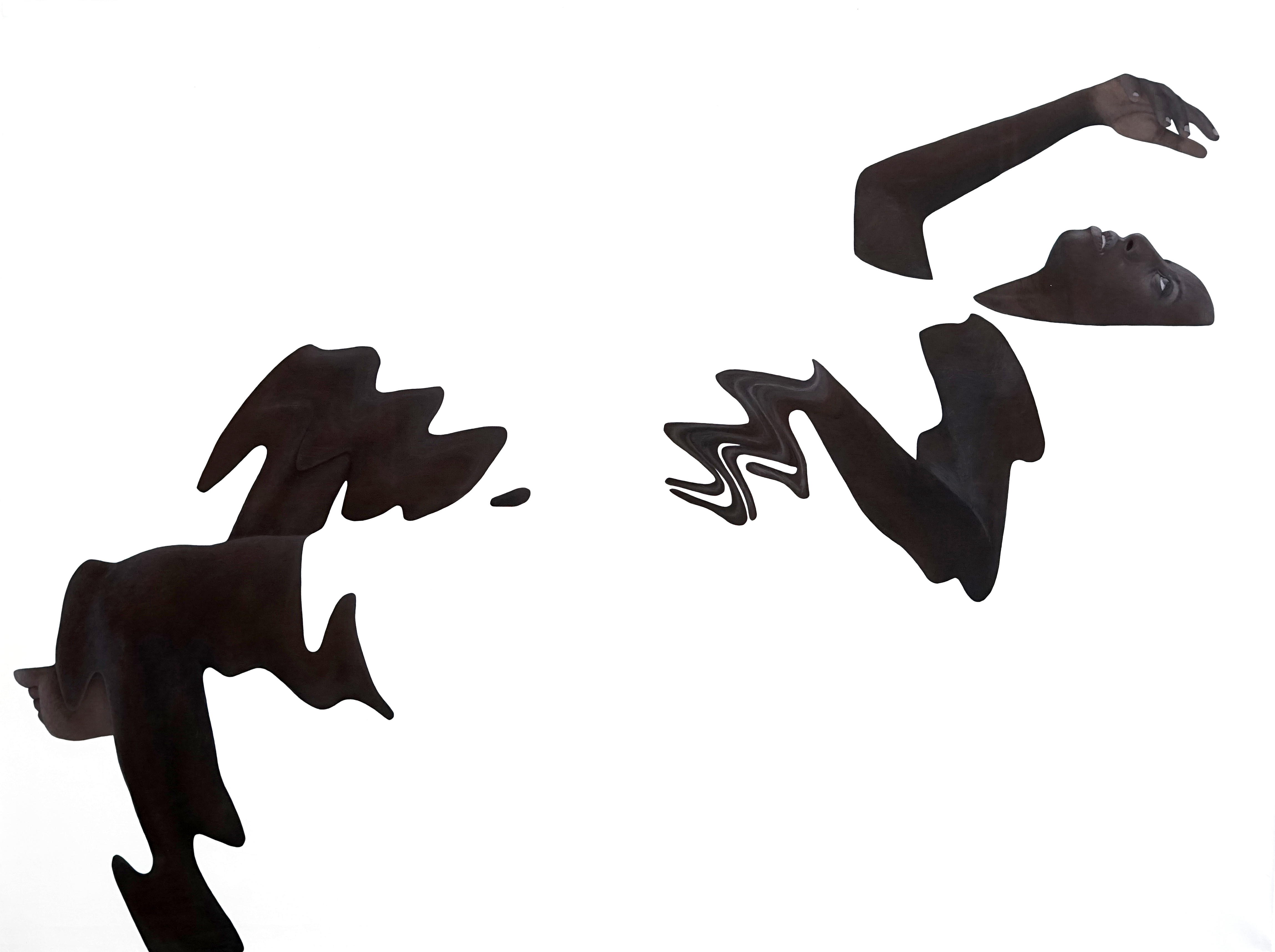
Sungi Mlengeya, Afloat, 2024
Being a Tanzanian artist, Sungi is acutely aware of the expectations placed on African art.
“In Arusha, where I live, the art scene is heavily shaped by tourism – wildlife paintings, the ‘Big Five’ safari themes, and Tinga Tinga art, which is a national style,” she explains. “I knew from the beginning that I didn’t want to follow that path.”
Instead, she chose figurative painting, particularly the human form, as a means of artistic exploration and distinction. “I started with faces. It felt like a natural way to gauge my skills. If I could paint a face, I knew I could push myself further,” she recalls. Over time, her work expanded to include full bodies, exploring themes of movement, relationships and individuality.
In terms of technique, she has remained committed to acrylic on canvas. “The artists around me used acrylics, so that’s what I learned. Plus, I’m physically sensitive to certain materials, so oil paint was never an option.”
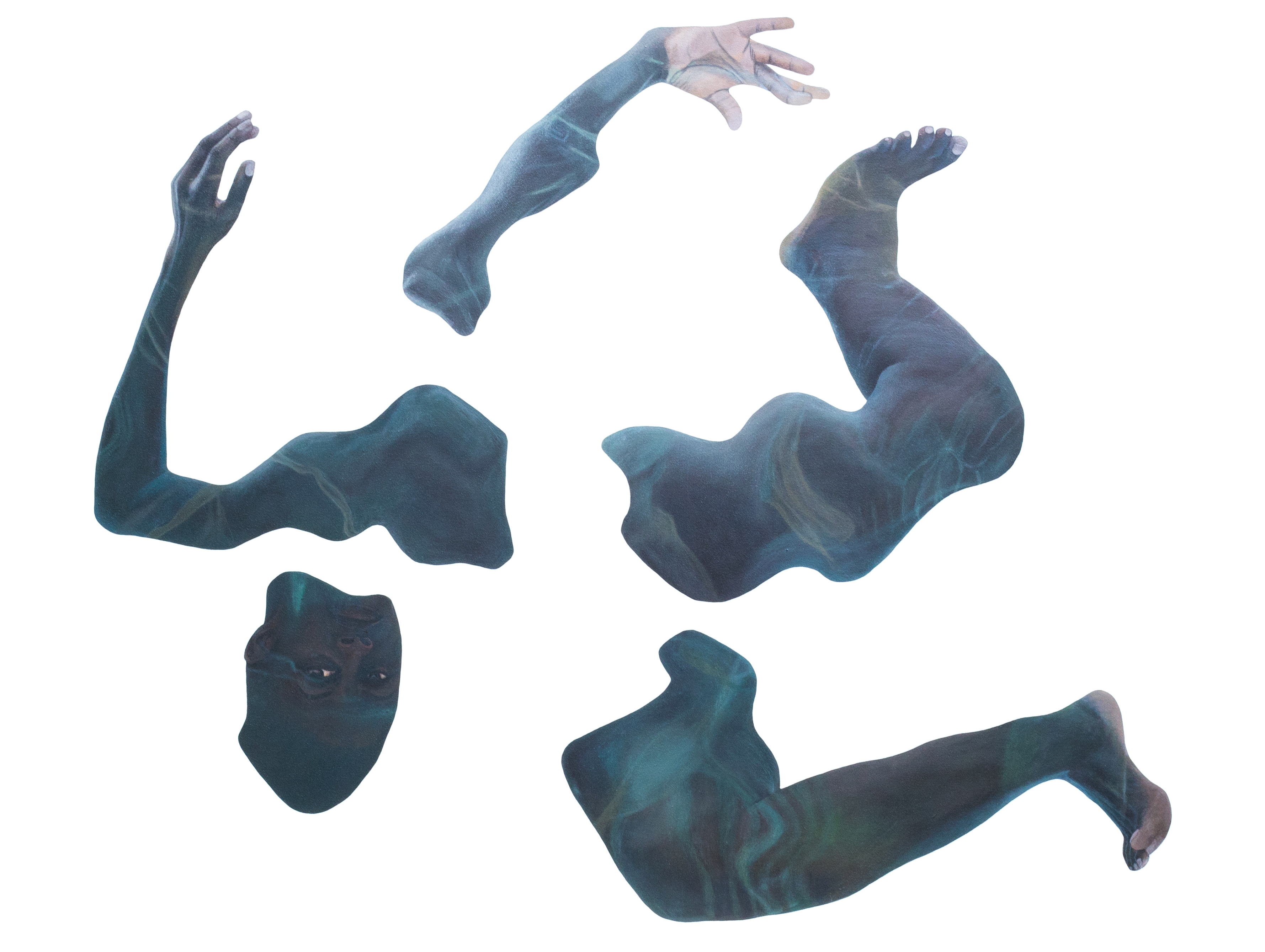
Sungi Mlengeya, Surge, 2024
Sungi’s work is not just about representation; it is about storytelling. “In the beginning, my focus was purely on technique. But as I got more comfortable, I started exploring themes that resonated with me,” she says.
Her earlier works centred on togetherness – figures in quiet unity, celebrating sisterhood and connection. Over time, her paintings evolved to capture more dynamic expressions, incorporating movement and dance. “Dance embodies existence. A dancer is fully in the present moment, unbothered by anything outside of their space. That carefreeness, that joy – it resonates with me deeply,” she explains.
More recently, she has been drawn to the theme of water. “Water is transformative. It represents peace, clarity and freedom. The way it reflects light, interacts with the body – it’s something I want to capture more in my work.”
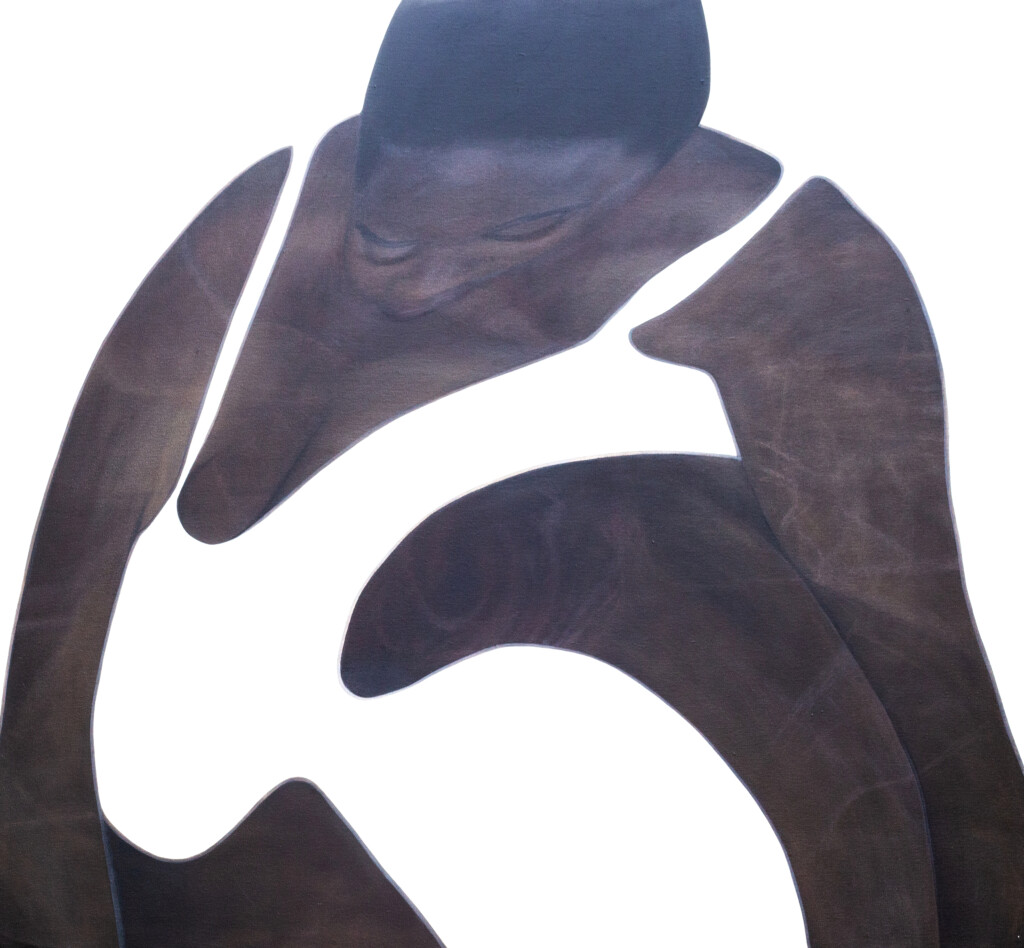
Sungi Mlengeya, In the Depths, 2024
Sungi’s work is gaining international recognition, but she is keenly aware of the misconceptions that plague African contemporary art. “One of the biggest is that African art has to follow a specific aesthetic – bold colours, tribal patterns or wildlife themes. But we live in a world full of influences. African artists are as diverse in style and subject as any other artists globally,” she says.
She believes that younger generations of African creatives are crucial in challenging these stereotypes. “There’s still a lot of unlearning that needs to happen, especially in terms of what we believe art should be and who it should speak to. The global art world is vast, and we should be creating with that in mind.”
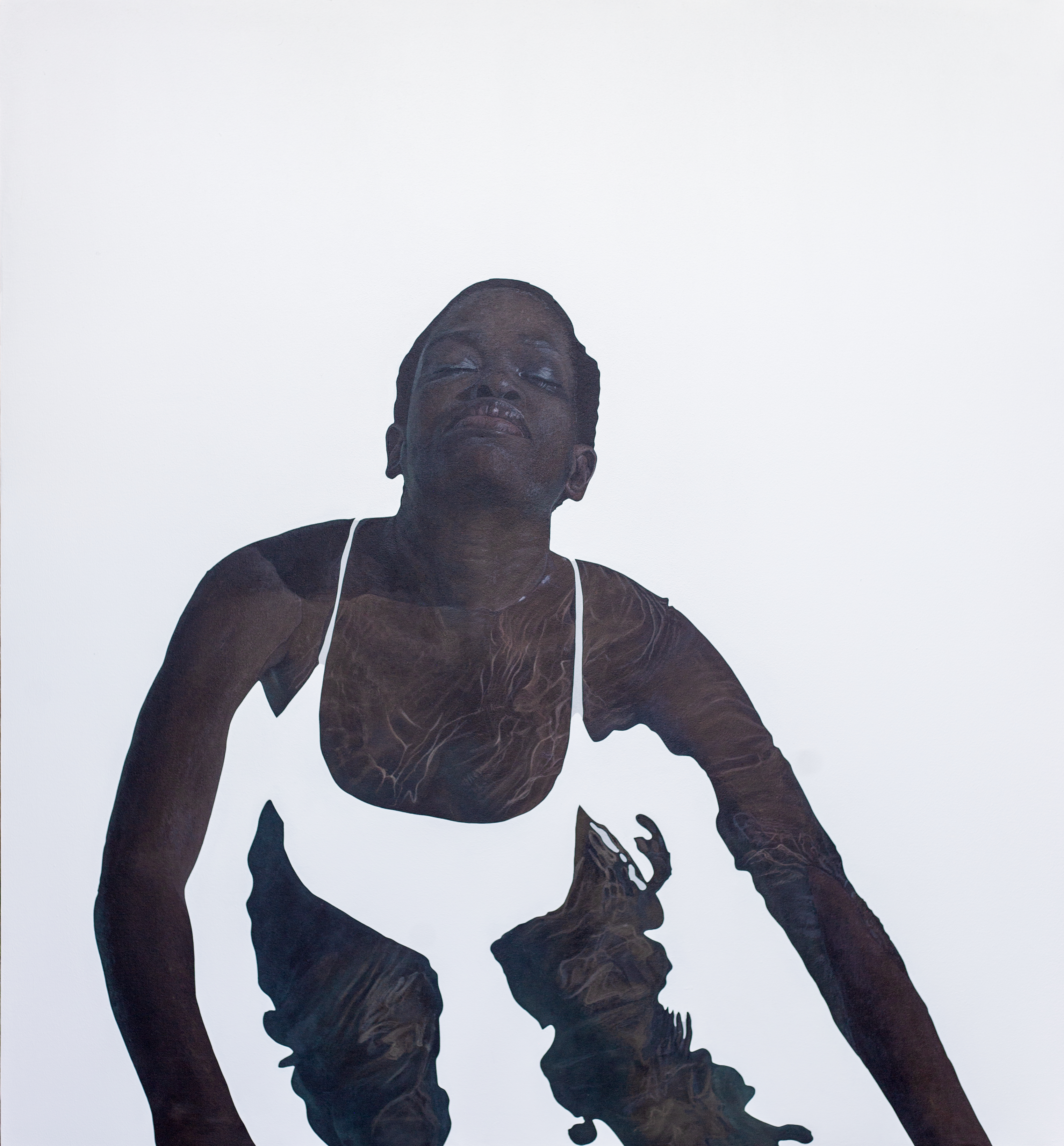
Sungi Mlengeya, Shimmers, 2025
Sungi’s artistic journey is far from complete. As she continues to experiment with new themes and techniques, she remains committed to her core vision: capturing the essence of Black womanhood with depth and dignity.
Looking ahead, she hopes to explore water more deeply – both as a visual element and as a metaphor for transformation. “Water calms me. It’s reflective, fluid and grounding. I want to find ways to bring that essence into my work,” she shares.
As for what she wants viewers to take away from her art, her answer is simple: “I want them to get lost in it. To immerse themselves in the experience, as if they’re stepping into water. If they see the shimmer of the waves in my paintings, I want them to feel at peace.”
That sense of immersion takes center stage in Tides of Being, her upcoming exhibition at the NADA Exhibition Space in New York (311 East Broadway, 2nd Floor), running from April 10 to May 3, 2025. Opening night takes place on Thursday, April 10th from 6:00 to 9:00 PM—an ideal moment to experience Mlengeya’s evolving vision in person.
In a world that often demands definition and categorisation, Sungi Mlengeya’s work remains beautifully open – an invitation to dream, to celebrate and to exist beyond the margins.
The pages of Fifty Four Mag share with the world the art, culture, talent, and luxury that exist throughout the African diaspora—through words and images that are crafted with deep consideration and an unwavering commitment to authenticity.
©2024 Fifty Four Magazine. All Rights Reserved. Privacy Policy legal Information Advertising Opportunities
©2024 Fifty Four Magazine. All Rights Reserved.
Powered by SOLVNT